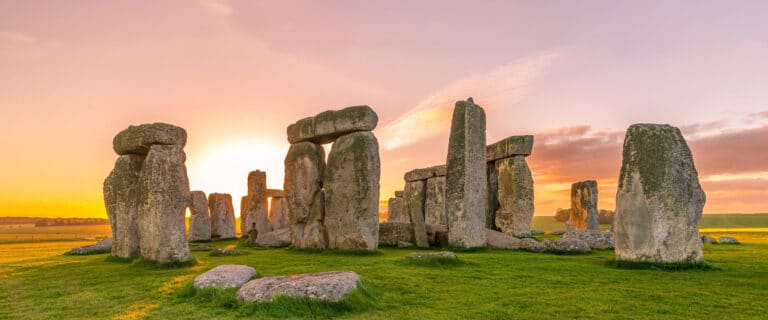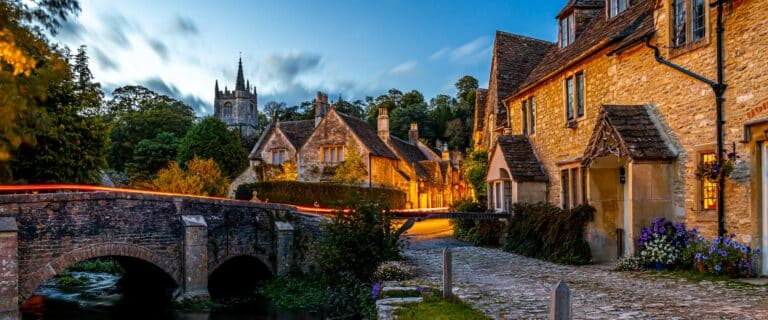In North Yorkshire, at the confluence of the Ouse and Foss Rivers, is the medieval town of York. The city is nearly 2000 years old with a rich heritage. It was Eboracum, the capital of the Roman province, Britannia Inferior, and later Jorvik, the capital of a Viking territory. For decades it was a major railway hub and an important manufacturing center. And there are more things to do in York than can seemingly be accomplished in a lifetime.
1. York Minster

There are more things to see and do at York Minster than you can count. Prioritize seeing the stained glasses (some dating back to the 12th century), shrines, vaults and organ. There are also hidden tours to see parts of the church normally closed to public access. A new display recounting the church’s history, Revealing York Minster, is in the Undercroft. And there are more than 250,000 pieces of silver, stonework, artwork, monuments and textiles scattered throughout the church.
2. Clifford’s Tower (York Castle)

Today, the Clifford’s Tower you visit is the ruin of a stone tower built during the reign of Henry II. Only the forebuilding still has a roof. As you wander the ruin, make sure to visit the chapel, which has been richly decorated. And definitely schedule time for the wall walk to enjoy panoramic views of York.
3. York Castle Museum

The museum was founded in 1938 by John L. Kirk to display his collection of social history, reflecting everyday life in the country. There are a number of collections on display. Favorites include the automaton clock from the 1780s, a collection of over 100 patchwork quilts and a tin of York-made cocoa that Shackleton took with him, but never used, during his first failed attempt to reach the South Pole. Also make sure to check out Kirkgate, the reconstructed Victorian street.
4. The Shambles

Today the shops and storefronts are occupied by a variety of restaurants and souvenir shops, including one dedicated to Harry Potter. As you amble through the Shambles, make sure you take time to explore the snickelways leading off of it.
5. Walls of York

There is a three-mile walk along a narrow path that can be completed in about two hours. Along this path there are four bars (gates), one Victorian gateway, one postern (small gateway) and 45 towers. The main bars are Bootham Bar, which has some of the oldest surviving stonework; Monk Bar, which has the tallest and most elaborate gatehouse; Walmgate Bar, which has the only surviving barbican; and Micklegate Bar, which was the traditional ceremonial bar for monarchs entering the city.
6. Jorvik Viking Centre

But beyond the ride is an extensive and growing museum area. There are currently nearly 1000 items on display and the Jorvik Centre recently entered into a three-year special agreement with the British Museum to display some of their artifacts at the Jorvik Centre.
And if you happen to visit in February, make sure to see the citywide Viking Festival.
7. National Railway Museum

The museum houses the Mallard, the fastest steam engine. Queen Victoria’s favorite carriage, which she regarded as her palace on wheels, is on display. So is the only Japanese bullet train to be seen outside of Japan. And finally there is the Chinese locomotive, a machine so big it is too large to operate on the British mainline.
8. York Dungeon
The York Dungeon describes itself as “a 75-minute journey into more than 2000 years of York’s horrible history” and “the black comedy of attractions.” It explores the darkest corners of York’s history and features its most notorious characters, like traitor Guy Fawkes and highwayman Dick Turpin. It opened in 1986 and was only the second dungeon show created in England (the first opened in London in 1975).
Visitors travel through 360-degree sets and 10 different live shows with actors. The shows have pretty gruesome titles and descriptions, like the Vengeance of the Vikings, Plague Doctor, The Torturer and Execution. Be prepared for lurid lighting, gallons of fake blood and lots of laughs.
9. Yorkshire Museum and Gardens

But the museum is even more famous for its gardens. The gardens cover more than ten acres and include a number of important historical buildings, like the Multiangular Tower. The gardens have a number of planting beds, like the Prairie Border and the Oriental Border. There is an Edible Wood (forest garden) that was planted in 2015. There is an Artists Garden where contemporary artwork is displayed for free. And there is the Mosaic Map, which recreates the Yorkshire section from a famous 1815 map.
10. Yorkshire Moors

However, there are still a several stands of ancient forest, with Dalby Forest being the crowning glory. There is abundant wildlife, particularly badgers and birds. There are towns and villages aplenty. And loads of walking and biking trails.
There are many, many more things to see and do in York. The York Art Gallery, Barley Hall, Yorkshire Air Museum and the Merchant Adventurer’s Hall are just a few that come to mind. Be sure to take advantage of all that York has to offer by booking one of our England tours.
Ask your Destination Expert about creating a York itinerary that weaves together its Viking roots, medieval wonders, and unforgettable strolls through the Shambles.
 My Trips
My Trips 









